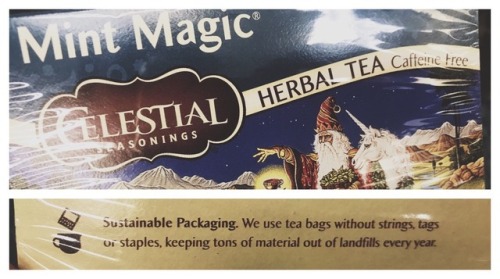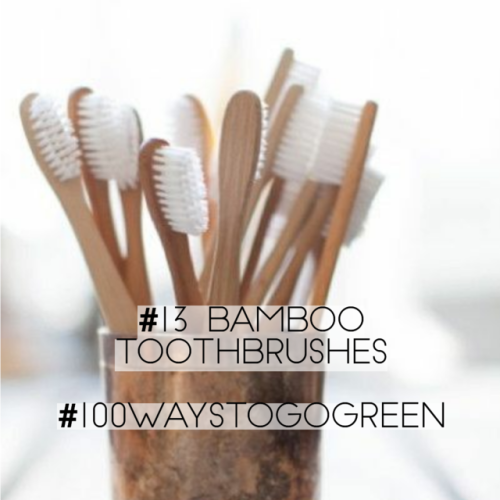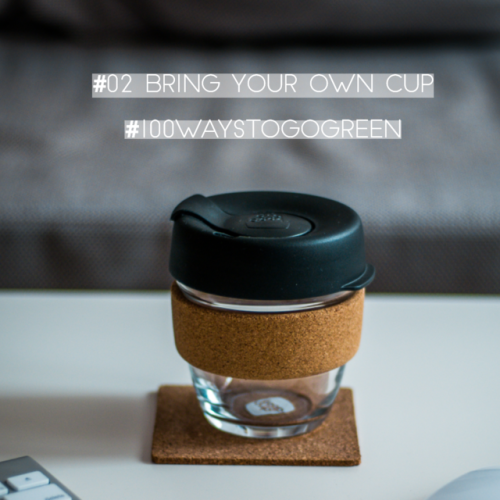#going green
Eco WEDDINGS
Here are some ideas:
- Give tree as a present. Just kidding. But really potted succulents make great surprise gifts that also spreads photosynthesis.
- Be modern and use e-invites. Or get some recycled paper, it has a nice feeling to it.
- Don’t use disposable ware. Think compostable.
If you have any more inspiration strikes, comment. I would love to read them.
also check my eco-wedding decor: etsy shop
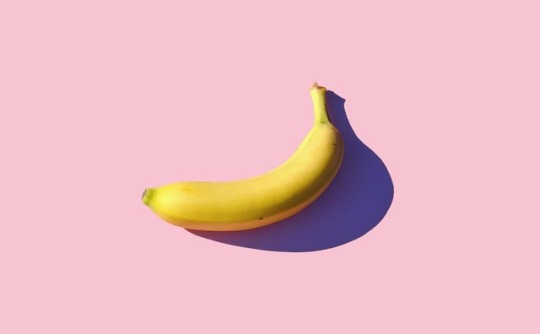
Help reduce produce waste by buying individual bananas at the store! Most single ones get overlooked in favor of bunches so buying the singles and doubles will get them off the rack before they start going bad and get tossed. Plus you can pick the ones without a sticker!
Avocado Co-Wash Bar Review

So a little while back I purchased the Avocado Co-Wash Conditioner Bar from Lush. When I was finally rid of all of my bottled conditioner, I was super excited to try it, but it didn’t quite live up to my expectations. But don’t let that discourage you from trying this bar! Here are the details on it:
- Form:I read somewhere that since this is a co-wash it is 80% conditioner and 20% shampoo so this bar had a little bit of lather, but not much (after all, what conditioner lathers?). Bonus: this is a co-wash so you don’t technically need to use shampoo any longer which saves you money. It looks exactly like the above picture and is sliced like a piece of cake. The green is a little soft if you press on it, and gets softer when wet while the red, as far as I could tell, is wax which doesn’t melt away unless you spend ages rubbing it between your hands. This is probably to help it hold up better in the shower. This bar is made primarily of natural ingredients, although it does contain some ‘safe synthetics’ including sulfates and fragrance. The full list of ingredients can be found on the product page of Lush, and you can click on any ingredient you’re not familiar with to learn more about what it is and why they use it.
- Price vs Amount: I paid $11 for 0.16 pounds which is basically a palm sized piece on the smaller side. If your hair is half as thick as mine, I wouldn’t imagine you having any problems using it for a good while.
- Fragrance:This smells exactly like Pez. Personally, I absolutely loved it because I came to terms long ago that anything I used for my hair would smell like coconuts. The smell was very strong, my sister could smell it from downstairs while I was showering upstairs and I could still catch the smell on my hair two days later.
- Packaging: When I purchased this, it came wrapped in 100% recyclable/biodegradable paper with a paper price sticker.
- Use: At first, I tried using this to aid in brushing through my hair like I normally do with conditioner but I didn’t feel like it was working the best it could, so I switched to brushing my hair without it and letting it soak on my hair while I finished the rest of my shower. This worked better so I continued like this for about a week. At that point, however, I couldn’t deny that my hair wasn’t getting as much moisture as it needs so I used the whole remaining half of the bar all at once to see if maybe I just wasn’t using enough. It was better than when I was using reasonable portions but it still didn’t hydrate my hair like I was hoping
Overall, if you’re looking for a conditioner bar and don’t mind strong smells I would definitely recommend giving this one a try. My review may not sound all that favorable for how well it actually worked but keep in mind that my hair needs a LOT of moisture. It’s super thick with 3C/4A type curls. When I wear it down, it’s pretty much an afro. I’ve always gone for things formulated specifically for curly hair because anything else, even if it contains coconut (like the Herbal Essences Hello Hydration duo) it just doesn’t do it for my hair. I could tell the bar was trying, so if my hair wasn’t so thick, I think it would’ve worked amazingly. Other girls I’ve talked to that have tried this absolutely love it, and their hair is still thick and wavy. If you want to try this, head into Lush and ask for a sample! They’re usually pretty open about letting customers try products before purchasing them. If you do decide to go ahead and purchase this but don’t like it, Lush is also generally pretty forgiving and will let you return it to them, even used.

Treat the planet as nice as your partner (or yourself!) this valentines
Nut Milk
I wrote this whole post then hit the escape button on accident so this may be of lower quality than before sorry :(
Cows are responsible for a disproportionate amount of methane and CO2 gasses that contribute to global warming. These being the facts, it is no wonder that more and more of the environmentally conscious are embracing veganism as well. One change you can easily make is the milk you drink! Some of the most common alternatives to traditional cow’s milk are almond, oat, cashew, and rice milks. While these don’t contain as much protein as cow’s milk, they are generally lower in calorie count and better for your overall health. This is particularly true because cows nowadays are often injected with hormones and steroids, which we ingest through the milk. By switching away from cow’s milk, you can avoid this (and keep them out of your childrens’ systems!!). You can also make your own substitution milks, so that it will contain the most basic ingredients, be almost entirely zero waste, and from what I’ve found, it can even be cheaper than what you might purchase in the store. I’ve been drinking almond milk for four months now and I love it! I’ll use my roommate’s regular milk on occasion but I’ve always had trouble drinking cow’s milk straight and now it’s even more true, because I love the taste of almond milk and the cow’s milk now to my palette has a bit of an animal-y taste to it, the same way that goat’s cheese does.
Know Your Labels - Vegan
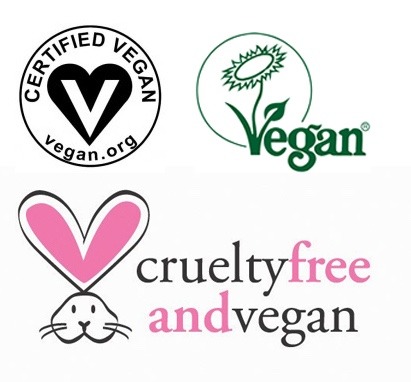
Although you may not be vegan, you should consider using vegan products. They are natural and tend not to contain harmful chemicals and synthetics that can harm you or the environment or utilize an abundance of resources to create!
Depending on where you are, the labels on your products might look different. The three above logos are the most common ones used to confirm that the items you are buying are certified vegan. The above logos are identifiers of certified, third party organizations that companies have asked to verify their products. Any other logo that certifies a product as vegan may be false, planted by the company with the intent of deceiving consumers. Here’s what you should know about them:
Vegan Action (top left): Requires companies to provide signed statements by the manufacturer with documents proving they are vegan. This organization does not test or monitor products, meaning this is based on the company and manufacturer’s honesty.
Vegan Society (top right): Companies provide signed statements by the manufacturer with documents to prove they are vegan. This organization also does not require testing or monitoring, so this is also based on the honesty of the company and manufacturer being certified.
PETA (bottom): This label certifies that a product is both cruelty free and vegan. To be certified, companies complete a short questionnaire and provide a statement of assurance. Once again, no testing or monitoring is performed, so these companies are certified based on their honesty.
(Source)
Brush with Bamboo Review

This is the second brand of bamboo toothbrush I have used and although I am used to the straight back that is standard for bamboo toothbrushes, something about the way the bristles are placed on this one made it slightly uncomfortable in my mouth.
- Form: This toothbrushes is made of bamboo and nylon bristles. The bamboo can be composted but unfortunately, the bristles are not biodegradable. They should be removed before composting the handle. As you can see, this backside of the handle is straight, rather than curved like many plastic toothbrushes.
- Price: I purchased one of these individually, for $5. You can buy 4 for $20 on their website. This is $12 more than what I would normally pay for a pack of 4 plastic toothbrushes.
- Fragrance: Not applicable, it’s a toothbrush!
- Packaging: When I ordered this, I did not see a picture of how it came, so I was pretty unhappy to find that it came with plastic wrapping in the window of the box. The box itself is recycled material and there is no extra packaging inside the box.
- Use: After adjusting to this brush, I realized why I was not as fond of this one as the first one I tried. Personally, i thought the brush part just felt too big in my mouth. It did eventually stop bothering me but it took a little longer to adjust to than it did to the straight back of these kinds of toothbrushes.
Overall, this wasn’t a bad toothbrush. The fact that the brush felt a little larger to me isn’t a deal breaker, but I did find it a little more expensive than the first I tried and the fact that it has a plastic window in the box means that I won’t be purchasing it again.
Staying Aware
I don’t know how you found this blog, but my guess is that since you found it you’re interested in sustainable living on some level. Regardless of where you are in your journey, and especially if you haven’t started or you’re not sure if you want to, I’d like you to take a moment and look around you. Open your bathroom cabinets, your kitchen cabinets, just look around your bedroom and think about what you see. If I had to hazard a guess, I’d say in your bathroom you have toothpaste, a toothbrush, shampoo, conditioner, body soap, a razor, shaving cream, hand soap, perfume, lotion, contact solution, face wash, sunscreen, hair gel, mouthwash, and makeup remover. Some of you will have more products than these and some of you will have less, but I’d say these are the common items most people will have. Most of these come in plastic containers. In the kitchen, I’m sure you have containers of juice, milk, condiments, fruit and vegetables in plastic bags, saran wrapped meats and granola bars nicely wrapped up. These things are also all in plastic, whether bulky or thin. That’s just two of the rooms in your house. Now, don’t think I’m trying to make you feel bad. Consuming things is in our nature and marketing has long targeted us to make us believe we need more things than we do. I simply would like you to be aware of how much you have in your house, how much of it will be around long after you are gone. If you can remember that once in a while, making sustainable changes should be that much easier.
I was searching for a spearmint tea after hearing a tip that spearmint is good for your skin. It was tough to track anything down in my local grocery stores, but this box of Celestial Seasonings tea was one of only a few teas I found with a blend that included spearmint leaves. (Couldn’t even find anything in bulk.)
In the spirit of looking for environmentally-friendly options, I wanted to see if the tea packaging for this brand would be recyclable, but I came across a quote on the back of the box that struck me as odd: “Sustainable Packaging. We use tea bags without strings, tags, or staples, keeping tons of material out of landfills every year.”
Upon first read, that sounds great, right? But it didn’t answer my question: can I recycle the packaging and compost the tea bags? The answer would determine my purchasing the object or not, yet the box made no clear note of it.
That leads me to my ultimate question: Why can’t companies make it more transparent whether or not their products are recyclable? Nowhere on this box could I find out whether or not the packaging or bags could be recycled or composted.
The more I dig into going zero waste, the more I find myself standing in the grocery store study packaging to look for recycling instructions. It’d be nice to see a standardized (and required) line or symbol indicating the recyclability of the packaging and its components — both for my convenience and the sake of the recycling center in town. In my mind, it makes just as much sense as putting the nutrition label on the box.
You’ll see on plastics the number indicating which type of recyclable plastic it is, but often almond milk cartons, produce containers, and box packaging, for example, don’t mention anything and I’m left to guess whether or not the packaging can in fact be recycled.
Shouldn’t companies have an obligation to fully inform their consumers not just what they’re consuming in terms of the food, but the packaging that comes with it?
For the record, I found out later from the company’s website that the box and the tea bags are able to be recycled and composted. But because I couldn’t find it on the box while I was staring at a wall of tea options, I made the in-store decision to go with the box of tea that was more expensive, but was up front about the recyclability of the packaging and tea bags.
Considering the tea I went with and the tea pictured had the same recycling/composting ability, this would’ve been an easy win for the less expensive Celestial Seasonings, if only they’d just included a single line with the information I needed. The same rule applies beyond tea boxes — and man, would it save me so much time in the grocery store.
Do any of you have thoughts on a standardized recyclability index for food packaging? Is there something I’ve missed? My ears (and asks) are open!
Post link
There are a lot of reasons to go green and do your part to preserve the environment, but sometimes you don’t have to look far to find them.
Post link
We have produced about 8.3 billion metric tons of plastic since its invention. Of that, about 79 percent of plastic waste is not recycled or burned — just left to sit in landfills or our oceans.
This is a massive health risk for humans and a deadly hazard for animals who think plastic waste is food, not to mention the broader environmental impacts. And yet, the solution may not be to ban plastic outright — it’s complicated.
Source: Kurzgesagt
#13 bamboo toothbrushes
Bamboo grows very fast, so it is the perfect material for an item that needs to be replaced every three month. Unlike plastic. A plastic toothbrush is used for a couple of weeks and then stays on this planet for several hundred years, since it will not biodegrade. That makes no sense. Switch to bamboo. Plus: You can just burry the old brushes in the backyard.
Before I reblog, I always do a little fact-checking and research first to make sure I’m not disseminating inaccurate information.
I found the above post to be a bit misleading. It says you can “just burry (sic) the old brushes in the backyard,” seemingly implying that the entire brush is biodegradable.
This isn’t the case. While it’s certainly a good step to buy a bamboo brush rather than a landfill-destined plastic brush, even a bamboo brush isn’t fully biodegradable.
I found that currently, no one has been able to create toothbrushes that are fully biodegradable because the bristles are typically made of some inorganic material like nylon — unless they use boar bristles. This doesn’t necessarily make boar bristle brushes the go-to option: some people who use these types of brushes complain of an odor, in addition to the fact that these brushes may not be considered vegan since they’re made with a hair harvested from an animal.
Within the realm of bamboo brushes, one of the seemingly best options is made by a company called Brush With Bamboo. According to their website, the bristles of their sustainably-made brushes are made with 62% castor bean oil and 38% nylon, rendering them “biobased, but still not biodegradable,” since nylon doesn’t decompose.
So if you bury your bamboo brush, sure, most of it will decompose. But the bristles won’t. In fact, most bamboo brush companies advise you to tweeze out the bristles before attempting to compost.
Sure, the bristles are small and seemingly insignificant, but you should know what you’re getting into before telling all your friends you’ve got a fully biodegradable toothbrush graveyard buried in your garden.
I’d be remiss not to include that there is one option, and it’s been around for centuries: the neem chew stick. It’s the only truly biodegradable option, since it’s made from a neem plant and is a literal stick. It’s exactly what it sounds like. To use it, you chew on the end of the stick until it frays into bristles, then you brush.
The downside? You have to chew your toothbrush down before you can use it. And when it comes to brushing your teeth, the more inconvenient it is, the less likely you are to do it. And one thing I really want to emphasize on my own blog is making more sustainable choices easier, not harder.
Until someone creates the perfect toothbrush — ergonomic, wallet-friendly, biodegradable, and not made from pig hair — it looks like the best option on the market is a bamboo brush. Just make sure to tweeze out those bristles before you toss them in the dirt.
Have you seen any other notable sustainably-made or biodegradable toothbrushes? My ears (and asks) are open.
Post link
Can’t help but think about how nice it would be if we all were raised up sustainably, valuing the objects we consume and use from the jump. Growing up then trying to unlearn wasteful habits is hard — and if you think about it, backward.
Before I get too far along in documenting my journey to live sustainably, I’d like to talk a little more about the concept of a “no waste” (or “zero waste”) lifestyle.
The first real exposure I had to the concept was when I heard about an NYU student who could fit all of her trash in a mason jar. I vaguely remember reading news articles about her, but at the time didn’t give her much thought other than thinking how hard it must be to live like that.
A few years later, I watched a TED talk by Lauren Singer — the same person I’d read about previously. I considered a no waste lifestyle with a little more interest this time around.
And now, finally, in 2018, the message is finally resonating with me. I rewatched her TED talk this year when I started thinking more about going no waste.
Essentially, the no waste lifestyle just means you aren’t contributing trash to a landfill. The way Lauren practices, and the way I aspire to practice, however, allows for recyclables and compost.
This is an important clause. After all, most of us don’t live directly off the land, so buying the food you need to live a healthy lifestyle will involve some packaged goods. But if you are conscientious about the packaged goods you buy and make sure they are recyclable, you’re still offsetting (albeit not eliminating) your impact on the environment.
Since that TED talk, Lauren’s Instagram shows that her mason jar has gotten a little more full, but all her trash over the past five years still fits in that 16 ounce container.
I’m still a ways away from carrying around a mason jar of my own trash, but I hope to transition to that possibility as quickly as my current lifestyle allows.
If you have a second, I’d highly recommend checking out Lauren’s website at http://trashisfortossers.com/. It’s got a ton of helpful resources, which I plan to consult frequently.
You can also check out the website of Bea Johnson, who Lauren references on her blog. Bea has been in the waste-free lifestyle game since 2008, so you know she’s got the low down on doing the damn thing: https://zerowastehome.com/
Know of any other helpful resources? My ears (and asks) are open.
Hi! I’ve been gone for awhile – I went on a cross-country road trip and got pretty sick after I got home, which led to a tonsillectomy (respect to my fellow adult tonsillectomy survivors out there, I mean YIKES).
But I’ve been thinking about this blog the whole time, and now it’s a Friday night and I have time to queue up some good stuff. It’s good to be back!
Today, I brought a reusable cup to Starbucks instead of using a paper cup. I’ve had this thing for awhile now, but have been lax about using it. It’s the little decisions like this that will add up. I am trying to make a major lifestyle change, and that can be overwhelming when I think of all the things I waste. But if I start with small changes, I’ll get where I want to be in time. Now, this is not to say Starbucks is the most sustainable company to be supporting. I don’t know much about that, but I would like to educate myself, since I think one important part of my journey involves being educated about where my money goes. Small steps.
Post link
Today, I received the following package:
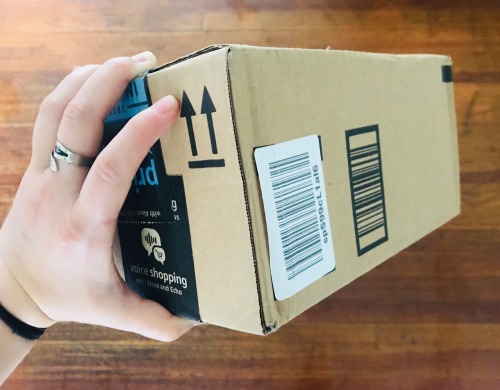
I didn’t remember ordering anything, so I had no idea what was inside. I went to open it.
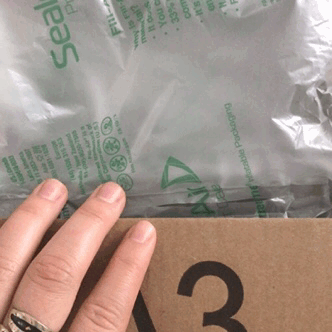
Then I remembered: I’d ordered a camera battery for my new Canon M50.
And that’s it. That’s all that was in the box.
A whole big box, for one tiny thing.
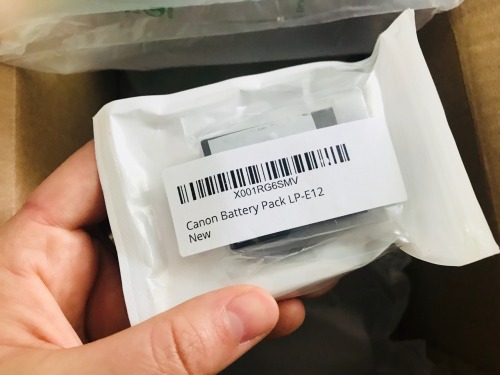
I felt real bad. That’s a whole lot of waste for one little battery pack. Especially considering the conversations and discussions I’ve been having recently about waste, I felt like a complete hypocrite.
I aspire to produce no waste. It’s an overwhelming idea: to be someone who creates absolutely no trash in a world of plastic packaging, trendy clothes that are in one day and out the next, and cyclical technology trends that send us running to the Apple store every year.
How do you escape waste? I have no real idea. But I’d like to figure it out.
So this blog is really just accountability for me. It’s a way for me to think more consciously and take the time to write about my efforts and missteps in my quest to go no waste in a town that might make that difficult.
I think waste is inherently illogical. Even if thinking about waste from the standpoint of someone who doesn’t particularly care about the environment, we should question why and how we got to a point where trash is normal, an integral part of modern life. Why wouldn’t we try to minimize instead of accelerate the depletion of finite resources? We were only allotted so much, and we humans have known that for awhile — so why would we entertain a system so irrational, one that blatantly supports the constant production of waste?
Anyway, I’ll try to stay off my soapbox, because truthfully I’m still thinking through the philosophy of it all. But I will continue to question and learn about my own habits, and if you feel like joining in along the way, I’d love to hear about it.
I’m always looking for more educational materials so if you have any, please send them my way! For any of you who might already be on this path or for those just starting, I’d love to use this blog as a space to connect and share inspiration.
It’s going to be tough, and I’m not sure I will ever be able to say I live an entirely no waste lifestyle, but I’m going to try.
Here goes nothing.
#06 skip single-use plastics
Straws, Starbucks, red solo cups, one time plates or food wrapping are all made out of plastic. It’s a very durable material which stays on our planet for several hundred years, but those products are made for one single use only, they are tossed into trash to be burnt, in the best case or worse, they are littered elsewhere and might end up in the ocean eventually. One thing to do is of course recycling as much as possible. But plastics can never really be recycled, they are only downcycled. So the only real solution against plastic pollution is to stop making those plastic items in the first place.
What everyone can do is refuse straws in bars and cafes or serve party drinks in real glasses and food in real plates. We can also ask for a real mug when having our drink to stay not to go.
Post link
#04 buy less, choose well.
That means, basically, buying one high quality item instead of several lower quality things. One sweater you’d wear for years is less expensive and saves so much resources and energy compared to a Zara sweater you wash three times before it loses its shape.
Post link
#02 bring your own cup
In the U.S. alone, more than 150 million single use coffee cups are ending up in the trash every. single. day. I don’t even dare to calculate what that would mean for a year.
Bringing your own cup every day will easily save 365 cups a year. That’s huge. Bonus: many places will even give you a discount for bringing your cup.
Post link

